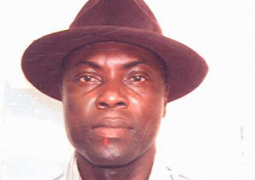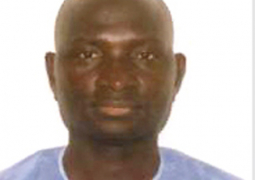A
World Bank team visited Banjul to take stock of progress in the energy sector
since the crisis period in 2017, when the bank provided emergency assistance to
the new administration towards addressing the immediate challenges.
The
energy sector roadmap identified key short-term priorities to stabilise the
system, and medium-term priorities including the goal to achieve universal
access by 2025, and diversify the energy mix through imports and solar to
reduce the cost of electricity. The roadmap, as part of the National
Development Plan, helped to mobilize over $400 million in funding for the
energy sector, to which the World Bank contributed $175 million (40%) through
national and regional operations.
One
of the key regional projects being supported by the World Bank is the OMVG
Regional Interconnection Project. By interconnecting The Gambia to Senegal,
Guinea and Guinea Bissau, the Project supports the goals spelled out in the
roadmap.
“The
OMVG interconnector is a crucial infrastructure that will enable The Gambia to
access clean, reliable and affordable electricity from the West Africa Power
Pool. The interconnector will also provide a backbone for the country, from
which electrification activities can be done. The race is now on –The Gambia
could be one of the first counties in West Africa to achieve universal access,”
said Mr. Charles Cormier, the World Bank practice manager for Energy and Extractives
in West Africa, during the field visit to the Brikama Substation, the landing
point of OMVG for the Greater Banjul Area.
At
Sate House, Mr. Charles J. Cormier recalled that when he visited The Gambia in
2017, there was crisis in the electricity sector but has observed the
improvement during his current visit. He was in Banjul to take stock of all the
progress registered since then.
The
World Bank executive expressed delight that the number of power cuts being
experienced in The Gambia today “has significantly reduced” compared to three
years ago.
“If you recall in 2017, after the change of
regime, there were huge power cuts of 16 to 18 cuts per day. The availability
of electricity was only 25 megawatts on a grid that has a demand of up to 100
megawatts at the time,” he recalled.
“That is a huge improvement. I think the
emergency plan was quite successful. The Gambia is among the few countries that
want to achieve this target five years earlier, including Ghana, Senegal, and
Cote d’Ivoire,” Mr. Cormier said.
His Excellency, President Adama Barrow’s
vision for the electricity sector is to reach universal access by 2025. In the
National Development Plan (NDP 2018- 2021), energy is categorised as “a
priority sector” in the context of the United Nation’s Sustainable Development
Goals (SDGs 2030).
For President Barrow, besides access, there is
also the issue of cost of electricity for average Gambians. The Gambia
currently pays 23 cents on average, while the U.S. pays 12 cents on average for
electricity. This pricing also impedes competitiveness of the economy if
electricity is expensive, President Barrow said.





